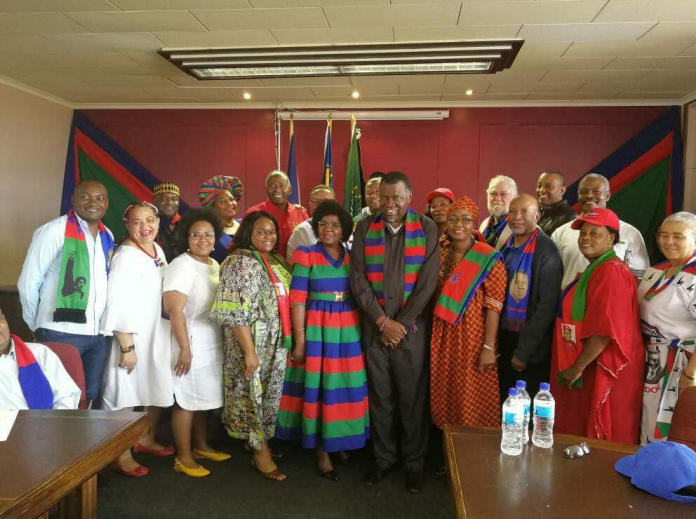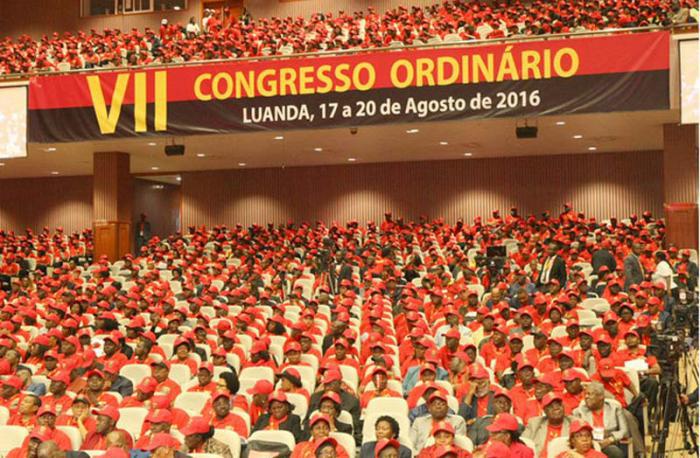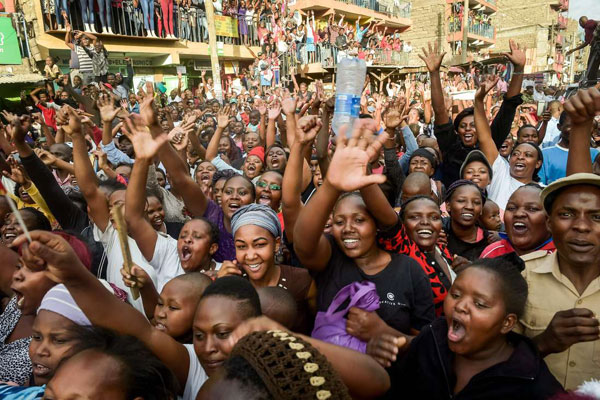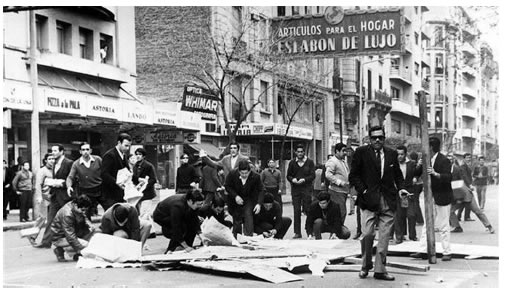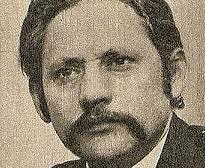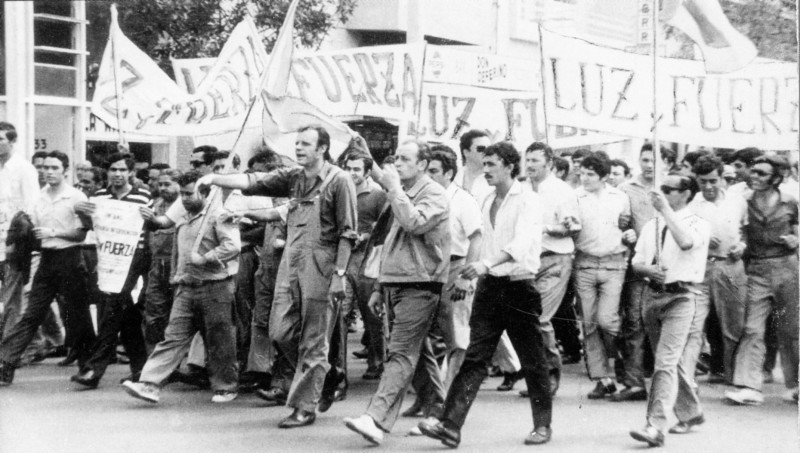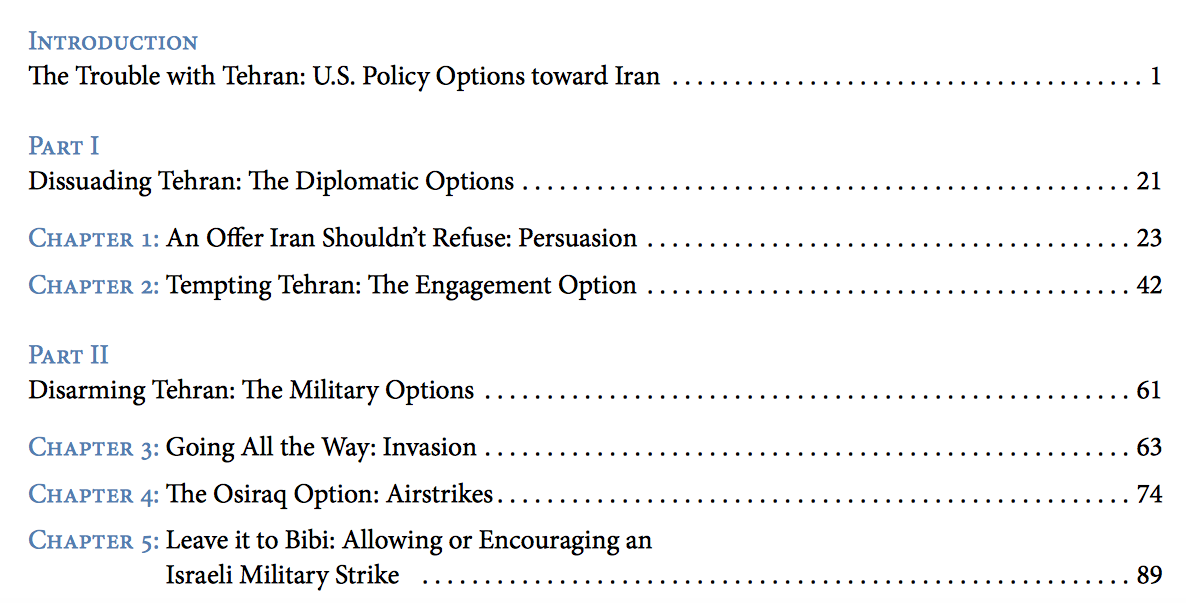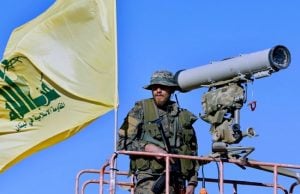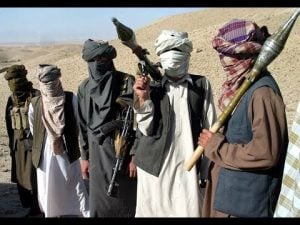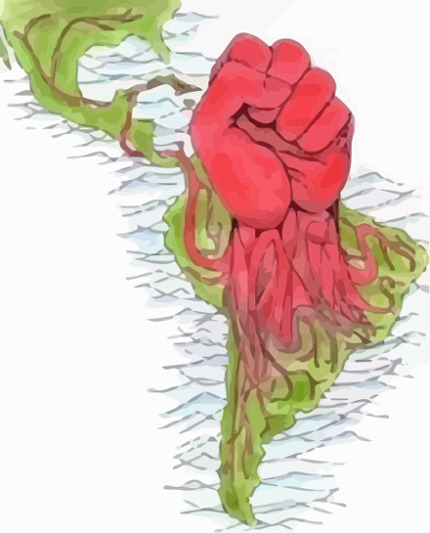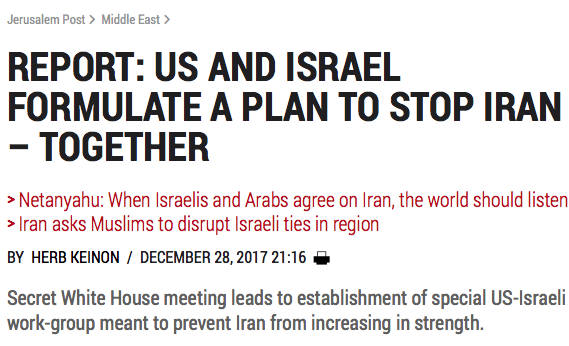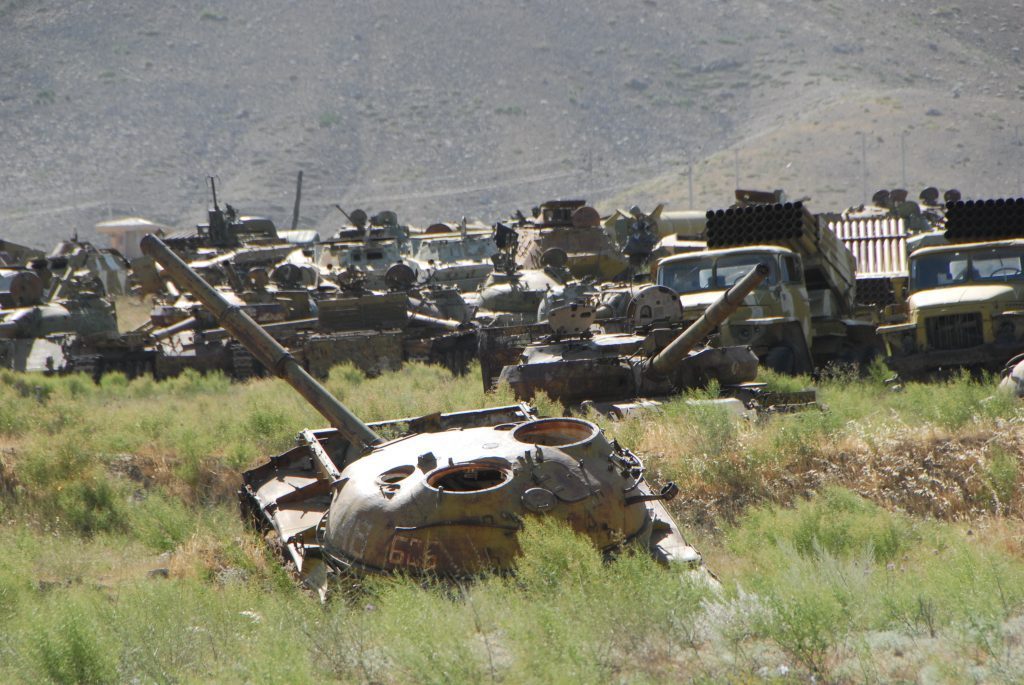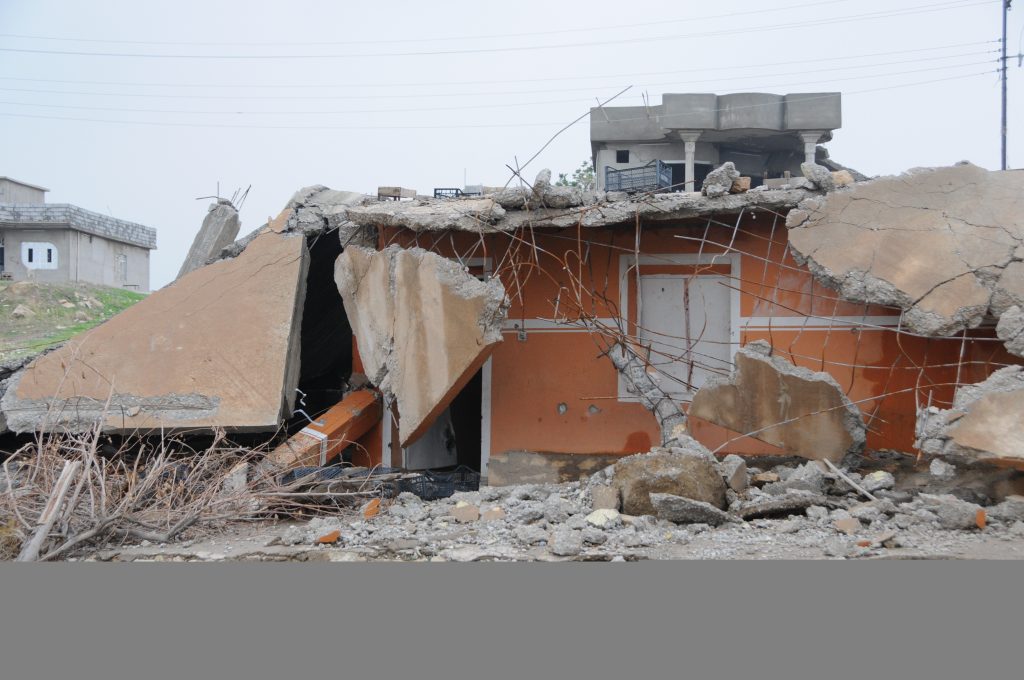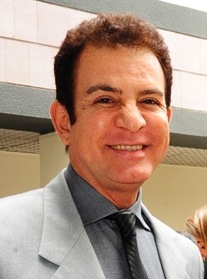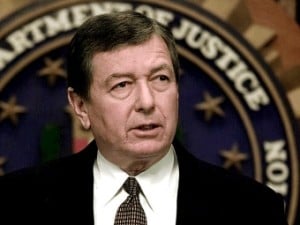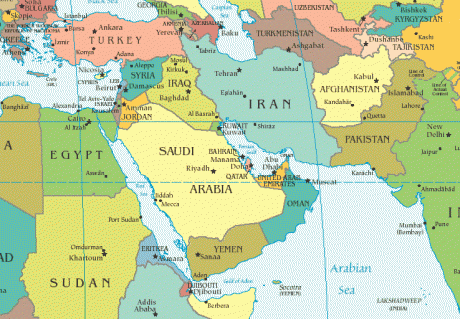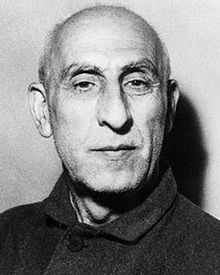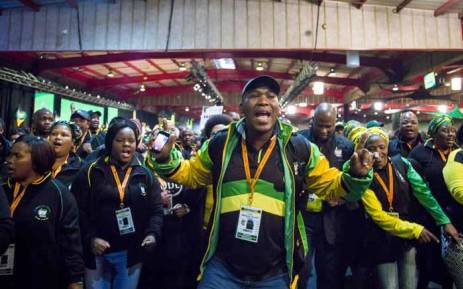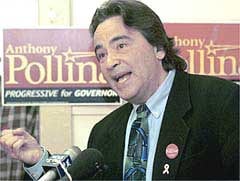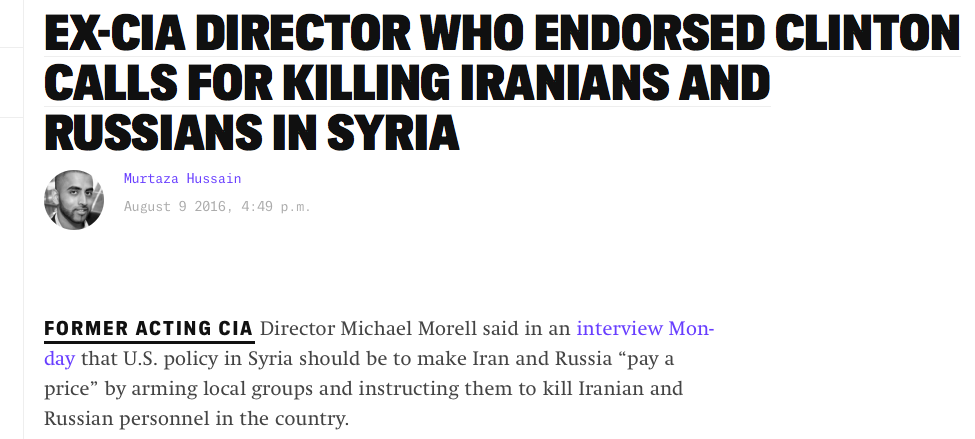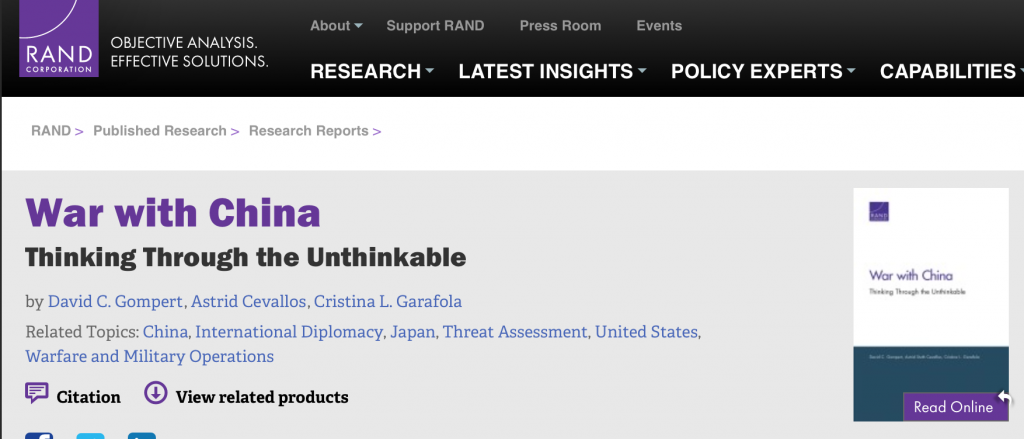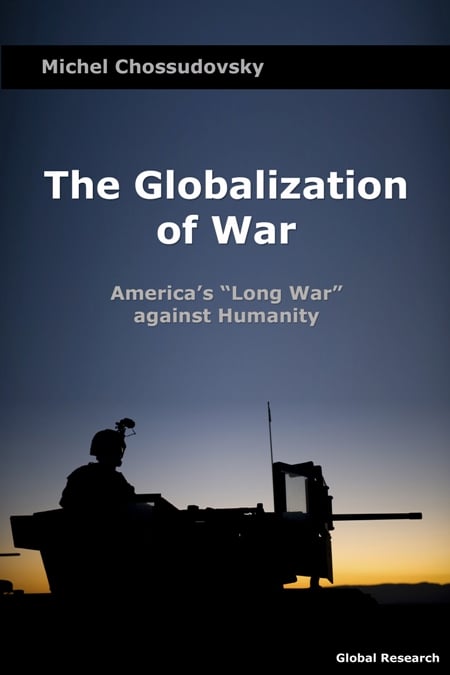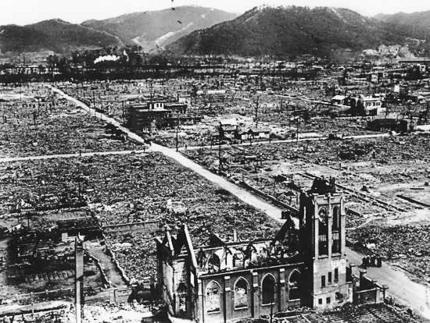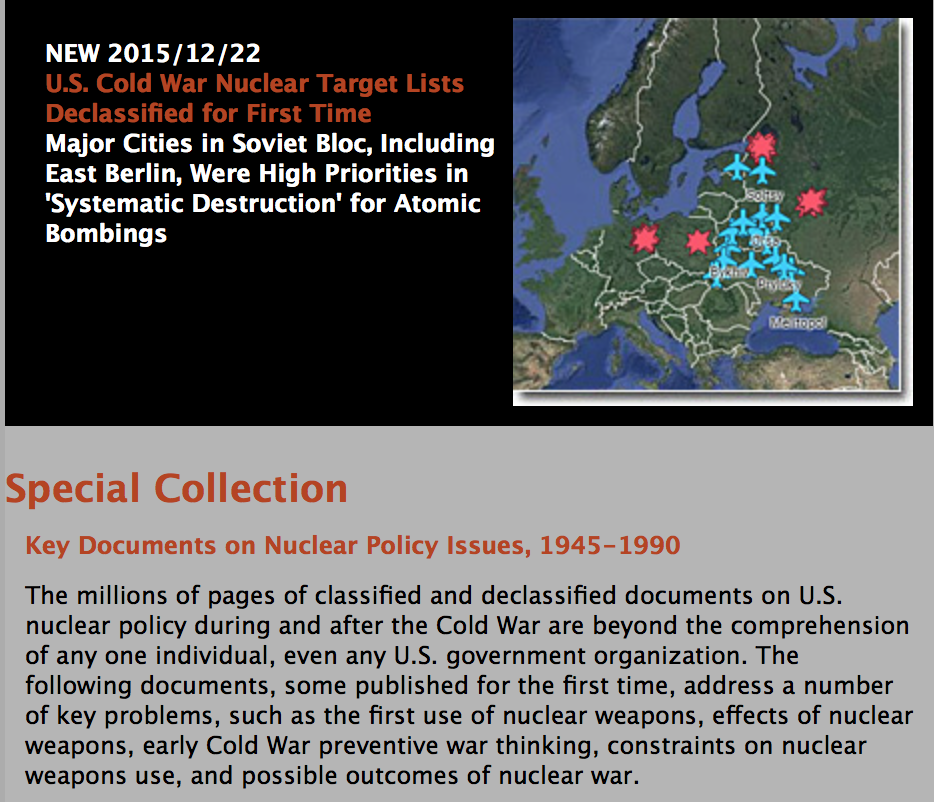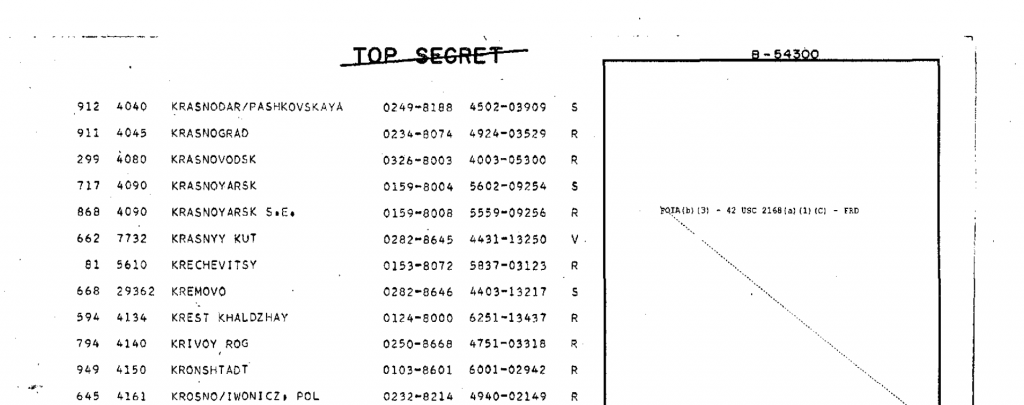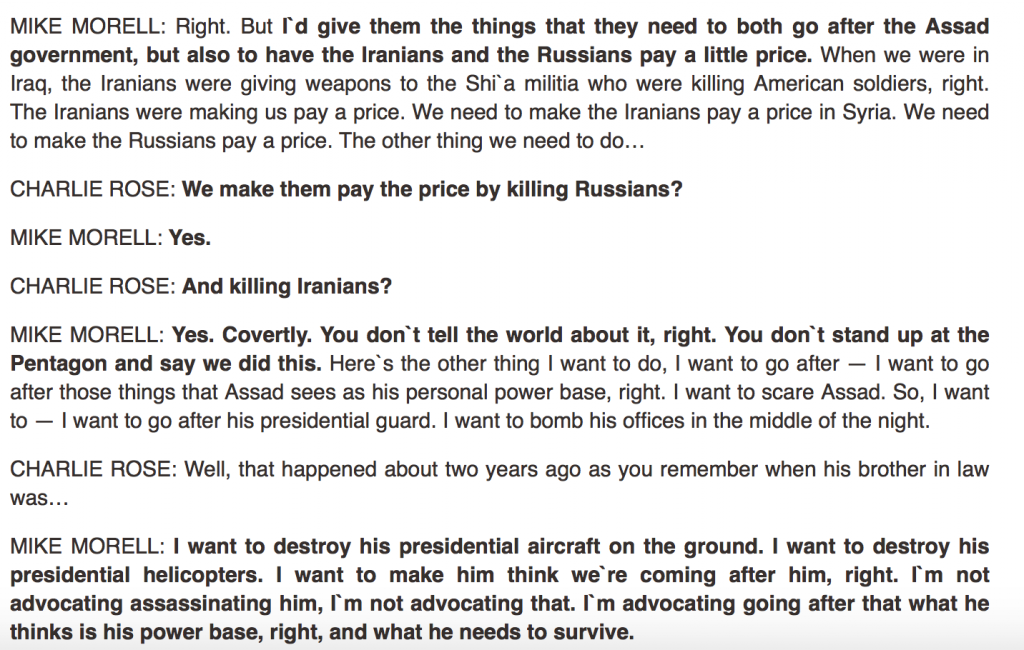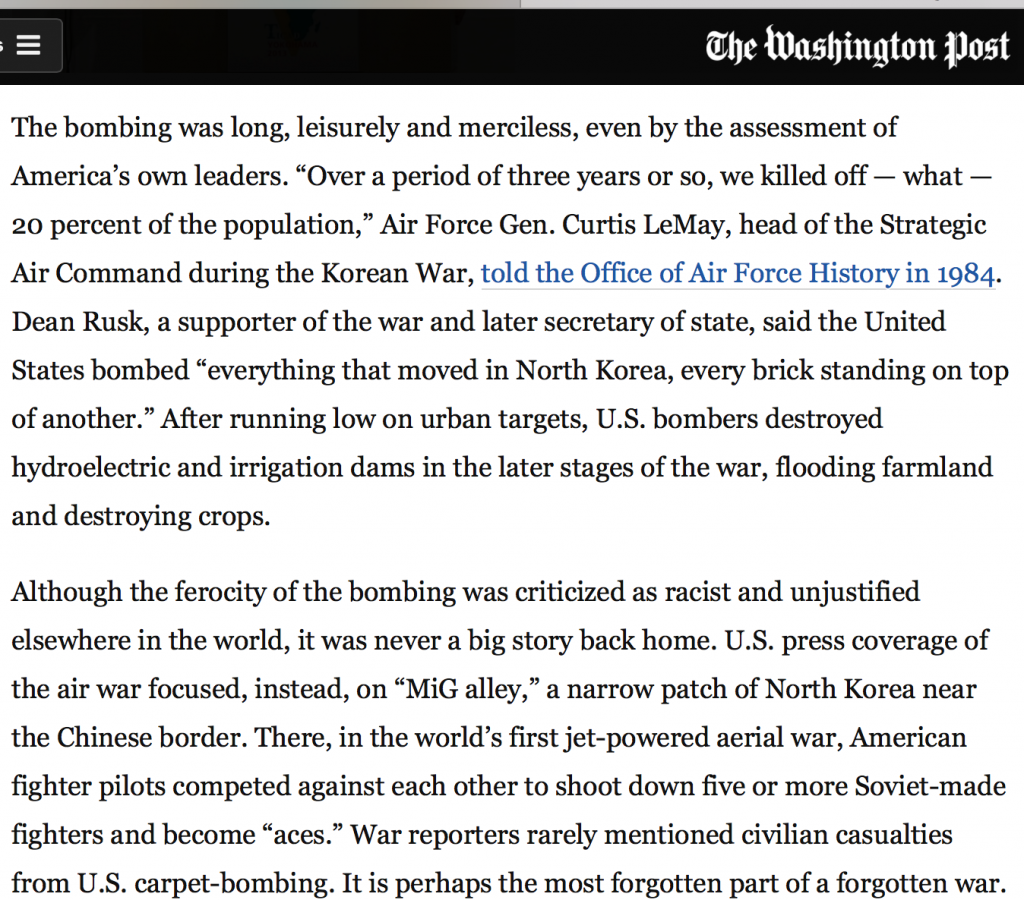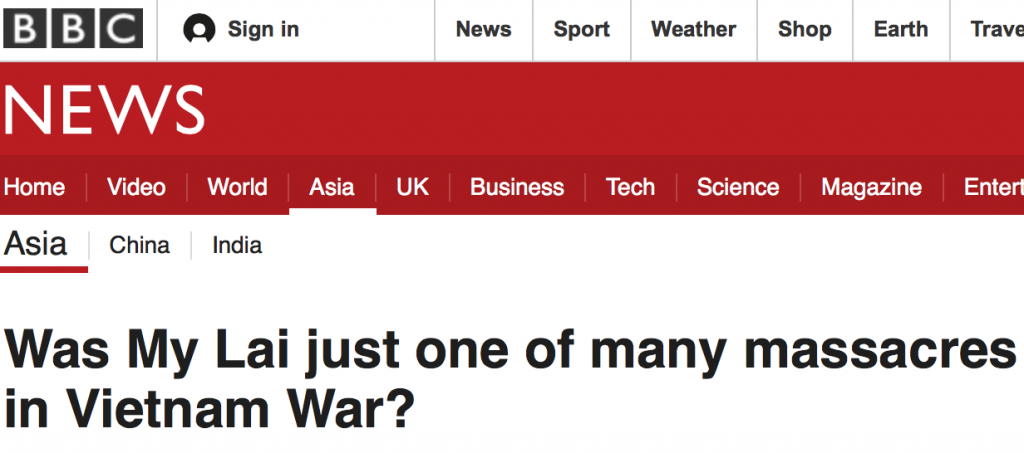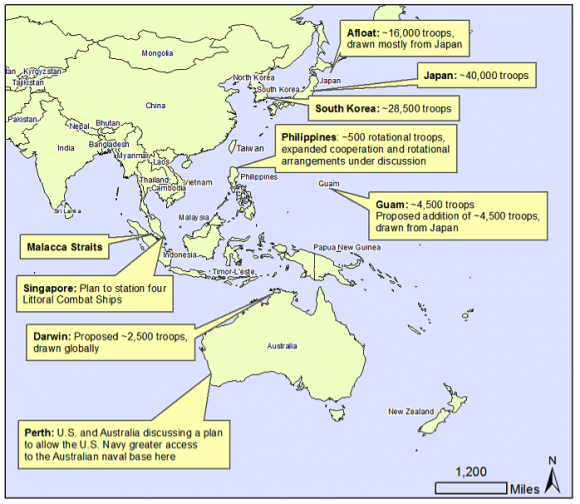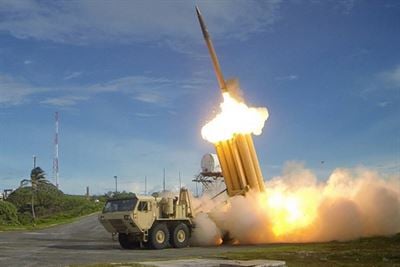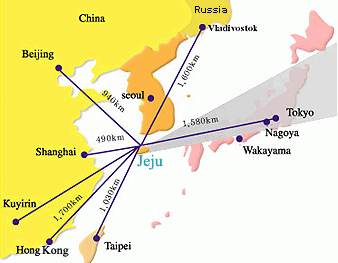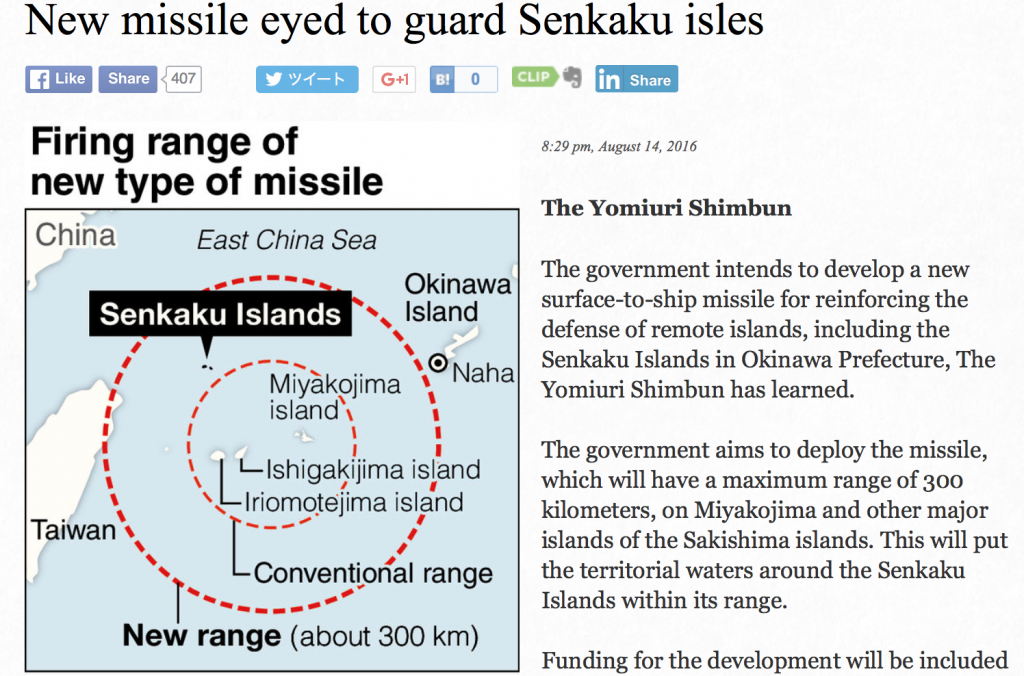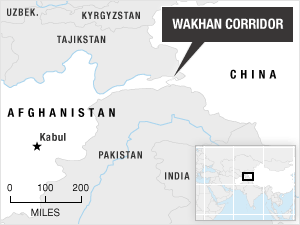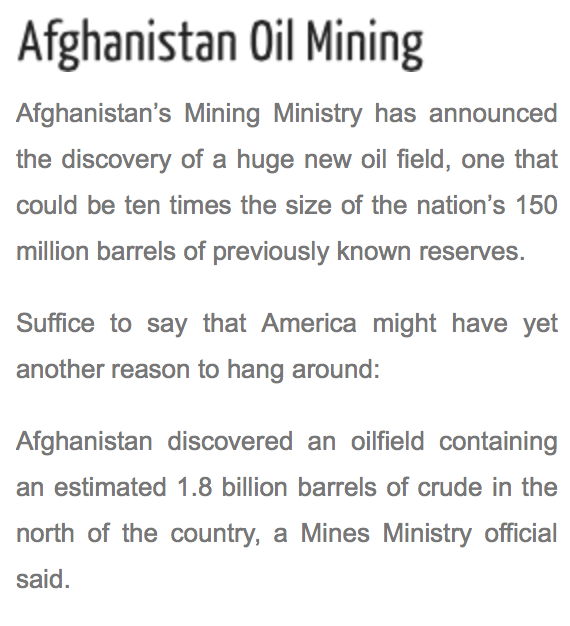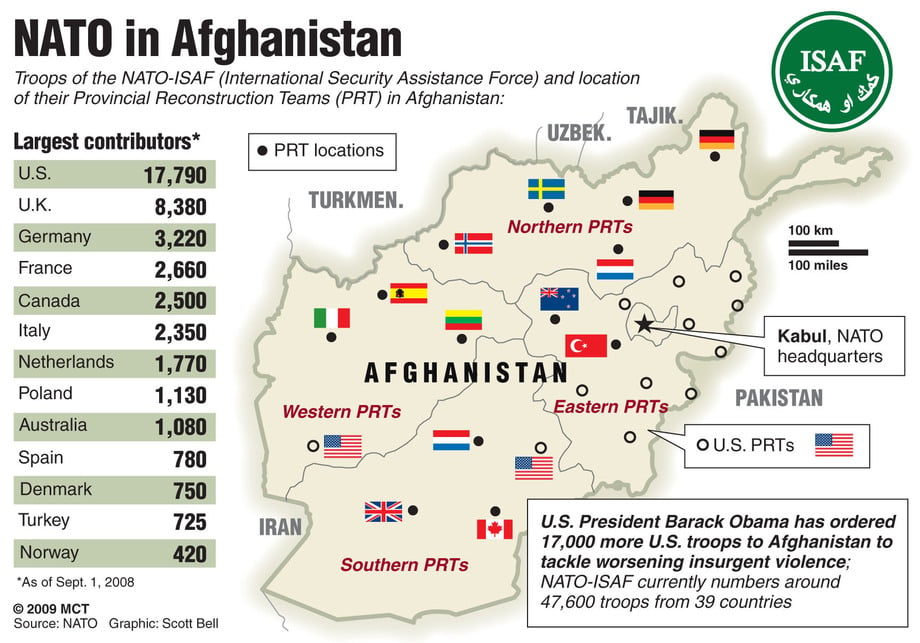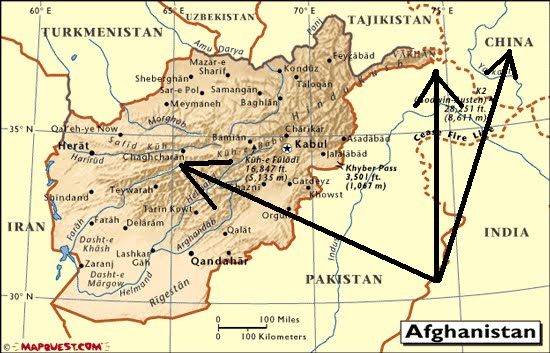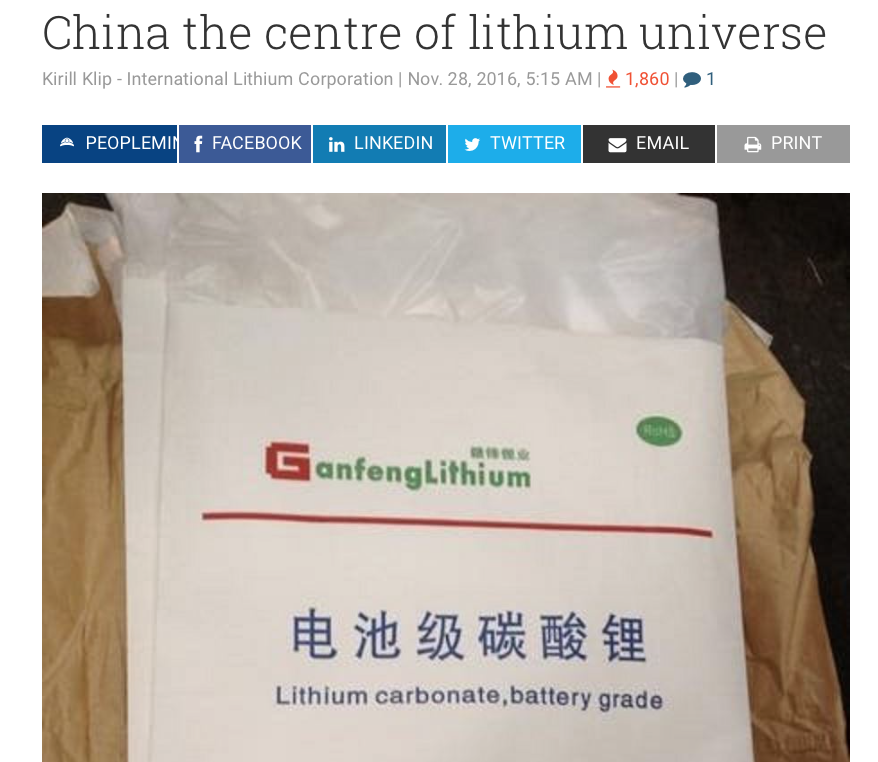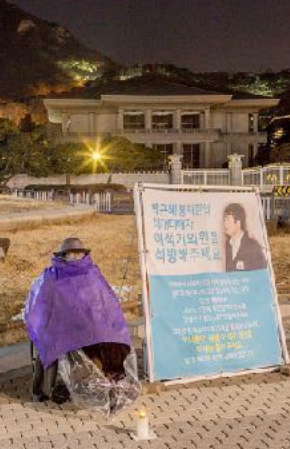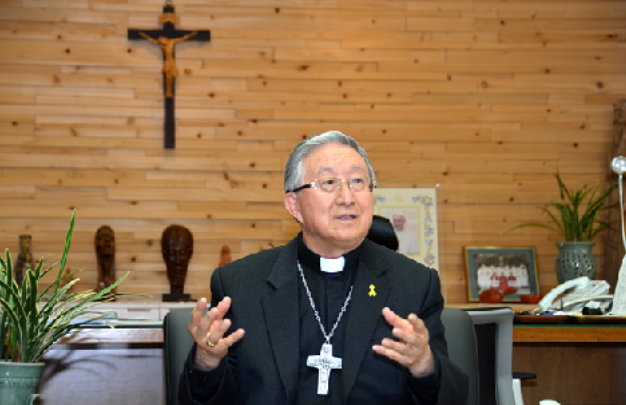Of 193 voting members of the UN, 65 sanctions-deserving, pro-Apartheid states shamefully failed to support the December 2017 UN General Assembly Resolution condemning US-backed Apartheid Israel’s unilateral annexation of Occupied East Jerusalem. While this moral failure is understandable for serial genocidal and genocide-based nations like Australia and Canada and countries complicit in WW2 Nazi atrocities like Croatia, Hungary, Latvia, Romania and the Ukraine, the moral failure of 21 out of 31 Small Island Developing States suggests that they succumbed to blatant US blackmail and corruption.
The result of the vote for the December 2017 UN General Assembly Resolution condemning US-backed Apartheid Israel over Occupied East Jerusalem is as follows [1]:
Member states that voted Yes (128) : Afghanistan, Albania, Algeria, Andorra, Angola, Armenia, Austria, Azerbaijan, Bahrain, Bangladesh, Barbados, Belarus, Belgium, Belize, Bolivia, Botswana, Brazil, Brunei, Bulgaria, Burkina Faso, Burundi, Cabo Verde, Cambodia, Chad, Chile, China, Comoros, Congo, Costa Rica, Cote d’Ivoire, Cuba, Cyprus, Democratic People’s Republic of Korea (North Korea), Denmark, Djibouti, Dominica, Ecuador, Egypt, Eritrea, Estonia, Ethiopia, Finland, France, Gabon, Gambia, Germany, Ghana, Greece, Grenada, Guinea, Guyana, Iceland, India, Indonesia, Iran, Iraq, Ireland, Italy, Japan, Jordan, Kazakhstan, Kuwait, Kyrgyzstan, Laos, Lebanon, Liberia, Libya, Liechtenstein, Lithuania, Luxembourg, Madagascar, Malaysia, Maldives, Mali, Malta, Mauritania, Mauritius, Monaco, Montenegro, Morocco, Mozambique, Namibia, Nepal, Netherlands, New Zealand, Nicaragua, Niger, Nigeria, Norway, Oman, Pakistan, Papua New Guinea, Peru, Portugal, Qatar, Republic of Korea (South Korea), Russia, Saint Vincent and the Grenadines, Saudi Arabia, Senegal, Serbia, Seychelles, Singapore, Slovakia, Slovenia, Somalia, South Africa, Spain, Sri Lanka, Sudan, Suriname, Sweden, Switzerland, Syria, Tajikistan, Thailand, The Former Yugoslav Republic of Macedonia, Tunisia, Turkey, United Arab Emirates, United Kingdom, United Republic of Tanzania, Uruguay, Uzbekistan, Venezuela, Vietnam, Yemen, and Zimbabwe.
Member states that voted No (9): Guatemala, Honduras, Israel, Marshall Islands, Micronesia, Nauru, Palau, Togo, and the United States.
Member states that Abstained (35): Antigua-Barbuda, Argentina, Australia, Bahamas, Benin, Bhutan, Bosnia-Herzegovina, Cameroon, Canada, Colombia, Croatia, Czech Republic, Dominican Republic, Equatorial Guinea, Fiji, Haiti, Hungary, Jamaica, Kiribati, Latvia, Lesotho, Malawi, Mexico, Panama, Paraguay, Philippines, Poland, Romania, Rwanda, Solomon Islands, South Sudan, Trinidad-Tobago, Tuvalu, Uganda, Vanuatu.
Member states that Didn’t Show (21): Central African Republic, Democratic Republic of the Congo (Zaire), El Salvador, Georgia, Guinea-Bissau, Kenya, Mongolia, Myanmar, Republic of Moldova, Saint Kitts-Nevis, Saint Lucia, Samoa, San Marino, Sao Tome-Principe, Sierra Leone, Swaziland, Timor-Leste, Tonga, Turkmenistan, Ukraine and Zambia.
Thus 128 out of 193 UN members states voted Yes in favour of International Law and Palestinian Human Rights and in opposition to US-backed Apartheid Israel’s continuing Occupation, not just of Occupied East Jerusalem but of the Occupied Palestinian Territories in general [1] where Indigenous Palestinians have been excluded from all Articles of the Universal Declaration of Human Rights [2].
Because of US backing, genocidally racist Apartheid Israel has got way with immense, Nazi-style crimes against humanity over the last 70 years – it has occupied all of Palestine plus neighbouring territories, the ongoing Palestinian Genocide has been associated, so far, with 2 million Indigenous Palestinian deaths from violence, 0.1 million, or imposed deprivation, 1.9 million, since WW1, 90% of Palestine has been ethnically cleansed, 7 million Palestinians are excluded from Palestine, and 14 million Palestinians are excluded from all or part of Palestine. 5 million Occupied Palestinians (half children and three quarters women and children) are indefinitely, criminally, violently and highly abusively incarcerated without human rights in the Gaza Concentration Camp (2 million) or in ever-diminishing West Bank ghettoes (3 million). Of Apartheid Israel’s 6.8 million Indigenous Palestinian subjects, 5 million (74%) are excluded from voting for the government ruling them i.e. they are subject to egregious Apartheid that is worse than that in US-, UK-, Australia- and Apartheid Israel-backed Apartheid South Africa [2-16].
From an International Law perspective, US-backed Apartheid Israel grossly violates (1) the Charter of the United Nations that declares that countries cannot simply acquire territory by force [17]; (2) Article 2 of the UN Genocide Convention which states that “In the present Convention, genocide means any of the following acts committed with intent to destroy, in whole or in part, a national, ethnic, racial or religious group, as such: a) Killing members of the group; b) Causing serious bodily or mental harm to members of the group; c) Deliberately inflicting on the group conditions of life calculated to bring about its physical destruction in whole or in part; d) Imposing measures intended to prevent births within the group; e) Forcibly transferring children of the group to another group” [18]; and (3) Articles 55 and 56 of the Geneva Convention relative to the Protection of Civilian Persons in Time of War that unequivocally state that the Occupier must supply its Subjects with life-sustaining food and medical services “to the fullest extent of the means available to it” [19] (the GDP per capita is $37,000 for Apartheid Israel (zero avoidable deaths per year) but $2,900 for Occupied Palestinians (about 4,200 avoidable deaths annually from deprivation as well as about 500 deaths from Israeli violence) [5, 20]. These gross violations of International Law occur in Occupied East Jerusalem as well as in the rest of the Occupied Palestinian Territory [21].
The full text of the 21 December 2017 UN General Assembly Resolution on the status of Jerusalem is as follows:
“Guided by the purposes and principles of the Charter of the United Nations, and reaffirming, inter alia, the inadmissibility of the acquisition of territory by force,
Bearing in mind the specific status of the Holy City of Jerusalem and, in particular, the need for the protection and preservation of the unique spiritual, religious and cultural dimensions of the city, as foreseen in relevant United Nations resolutions, Stressing that Jerusalem is a final status issue to be resolved through negotiations in line with relevant United Nations resolutions,
Expressing, in this regard, its deep regret at recent decisions concerning the status of Jerusalem,
- Affirms that any decisions and actions which purport to have altered the character, status or demographic composition of the Holy City of Jerusalem have no legal effect, are null and void and must be rescinded in compliance with relevant resolutions of the Security Council, and in this regard calls upon all States to refrain from the establishment of diplomatic missions in the Holy City of Jerusalem, pursuant to Security Council resolution 478 (1980);
- Demands that all States comply with Security Council resolutions regarding the Holy City of Jerusalem, and not recognize any actions or measures contrary to those resolutions; A/ES-10/L.22 2/2 17-22856
- Reiterates its call for the reversal of the negative trends on the ground that are imperilling the two-State solution and for the intensification and acceleration of international and regional efforts and support aimed at achieving, without delay, a comprehensive, just and lasting peace in the Middle East on the basis of the relevant United Nations resolutions, the Madrid terms of reference, including the principle of land for peace, the Arab Peace Initiative 1 and the Quartet road map,2 and an end to the Israeli occupation that began in 1967;
- Decides to adjourn the tenth emergency special session temporarily and to authorize the President of the General Assembly at its most recent session to resume its meeting upon request from Member States” [22].
The UN News Centre reported the UNGA vote thus:
“By an overwhelming majority, Member States in the United Nations General Assembly on Thursday “demanded” that all countries comply with Security Council resolutions regarding the status of Jerusalem, following an earlier decision by the United States to recognize the Holy City as the capital of Israel. Through a resolution adopted by a recorded vote of 128 in favour to nine against (Guatemala, Honduras, Israel, Marshall Islands, Federated States of Micronesia, Nauru, Palau, Togo, United States), with 35 abstentions, the 193-member Assembly expressed “deep regret” over recent decisions concerning the status of Jerusalem and stressed that the Holy City “is a final status issue to be resolved through negotiations in line with relevant UN resolutions.” Action in the Assembly today follows a failed attempt by the Security Council on Monday adopt a similar text reflecting regret among the body’s members about “recent decisions regarding the status of Jerusalem,” with a veto from the United States, a permanent member of the Council. Ahead of that failed resolution, Nickolay Mladenov, Special Coordinator for the Middle East Peace Process, told the Security Council that the security situation in Israel and the Occupied Palestinian Territory had become more tense in the wake of US President Donald Trump’s decision on 6 December to recognize Jerusalem as the capital of Israel. Subsequently, Yemen and Turkey, in their respective capacities as Chair of the Arab Group and the Chair of the Summit of the Organization of the Islamic Cooperation, requested the President of the General Assembly to “urgently resume’ the tenth emergency special session of the General Assembly in accordance with the so-named ‘Uniting for peace’ procedure. This procedure, under Assembly resolution 377 (1950), is a pathway around a Security Council veto. By it, the Assembly can call an emergency special session to consider a matter “with a view to making appropriate recommendations to members for collective measures,” if the Security Council fails to act or if there is lack of unanimity among the Council’s permanent members, China, France, Russia, United Kingdom, and the United States” [23].
The UN News Centre reported the failure of a prior UN Security Council vote on Occupied East Jerusalem due to veto by the US: “The United Nations Security Council on Monday failed to adopt the draft resolution that reflects regret among the body’s members about “recent decisions regarding the status of Jerusalem,” with a negative vote by the United States. The text, tabled by Egypt, reiterated the United Nations’ position on Jerusalem and would have affirmed “that any decisions and actions which purport to have altered, the character, status or demographic composition of the Holy City of Jerusalem have no legal effect, are null and void and must be rescinded in compliance with relevant resolutions of the Security Council.” The text would also have called on all States “to refrain from the establishment of diplomatic missions in the Holy City of Jerusalem.” A negative vote – or veto – from one of the Council’s five permanent members – China, France, Russia, United Kingdom and the United States – blocks passage of a resolution. Therefore, the draft was rejected despite support from the other four permanent members and from the 10 non-permanent members” [24]. The UN Security Council in 2017 was composed of 15 Members, the 5 permanent members (China, France, Russian Federation, the United Kingdom, and the United States) and 10 non-permanent members elected for two-year terms by the General Assembly (with end of term date): Bolivia (2018), Egypt (2017), Ethiopia (2018), Italy (2017), Japan (2017), Kazakhstan (2018), Senegal (2017), Sweden (2018), Ukraine (2017) and Uruguay (2017).

Source: Countercurrents
Now neo-Nazi Ukraine that had supported the UN Security Council Resolution remarkably Didn’t Show for the UN General Assembly vote and was rapidly rewarded for this pro-Apartheid position by the US agreeing to supply sophisticated anti-tank weapons to the Ukraine [25].
Those who supported Nazi Germany are legitimately described as pro-Nazi. Similarly, those supporting Apartheid Israel can reasonably be described as pro-Apartheid, noting that Apartheid is one of the vilest of crimes abhorred by the UN and International Law [26]. The wonderful Palestinian humanitarian Jesus declared: “He who is not for me is against me” [27] and the 65 out of 193 UN member nations not supporting the December 2017 UN General Assembly Resolution against US-backed Apartheid Israel unilaterally annexing Occupied East Jerusalem are shamefully anti-Palestine human rights anti-international law and pro-Apartheid, and as such deserved to suffer Boycotts, Divestment and Sanctions (BDS) as are presently being applied to Apartheid Israel.
The following analysis of pro-Apartheid states who failed to support the UN General Assembly Resolution on Occupied East Jerusalem is useful for those planning to ethically buy goods or services internationally or planning ethical international holidays.
(1). 28 of 35 OECD countries voted “Yes” but 7 pro-Apartheid OECD nations did not – Apartheid Israel, Australia, Canada, Czech Republic, Hungary, Poland and the US.
The Organisation for Economic Co-operation and Development (OECD) is a US hegemony-, race- and wealth-based collection of mostly US-linked, European and rich countries that notably excludes Russia, most Eastern European countries (excepting Czech Republic, Estonia, Hungary, Latvia, Poland, Slovak Republic, and Slovenia) as well as China, Taiwan, and Singapore.
The Organization for OECD countries include Australia, Austria, Belgium, Canada, Chile, Czech Republic, Denmark, Estonia, Finland, France, Germany, Greece, Hungary, Iceland, Ireland, Israël (Apartheid Israel), Italy, Japan, Korea, Latvia, Luxembourg, Mexico, Netherlands, New Zealand, Norway, Poland, Portugal, Slovak Republic, Slovenia, Spain, Sweden, Switzerland, Turkey, United Kingdom, United States [28].
28 of 35 OECD countries voted Yes. Of the 7 OECD countries that did not vote Yes, 2 voted No (the US and Apartheid Israel) and 5 Abstained (Australia, Canada, Czech Republic, Hungary and Poland). Of these 7 “advanced” countries that adopted a pro-racism, pro-Apartheid Israel and hence pro-Apartheid position, all have a dirty record of invading other countries with concomitant genocidal atrocities. Indeed invasion and colonization of their present territories commenced in 1788 (Australia), the 16th century (the US and Canada), 1917 (Apartheid Israel) and the 9th century (Hungary). However ethnic cleansing of their present territories was not enough and these 7 deeply racist countries have invaded further countries with attendant atrocities.
Thus Australia has invaded 85 countries, the US 72, Canada 25, Apartheid Israel 12 and Hungary 7 [20, 29, 30] with these invasions variously associated with genocide, as follows: Australia (30 genocide involvements, notably the ongoing Aboriginal Genocide and Aboriginal Ethnocide, 1788-present [20, 31]; the WW2 Bengali Holocaust, 1942-1945 [32-38]; the ongoing Muslim Holocaust and Muslim Genocide, 1990-present) [20, 29-30, 39-41]; Canada (genocide and ethnocide of Indigenous First Nations [20]; linked to UK and/or US genocidal atrocities, notably the ongoing Muslim Holocaust and Muslim Genocide, 1990-present [40, 41]), Apartheid Israel (ongoing Palestinian Genocide, 1917-present; variously involved in the Guatemala Mayan India Genocide, the Sri Lanka Tamil Genocide, the Myanmar Rohingya Genocide, and the Iraqi Genocide and Syrian Genocide that are part of the ongoing US-led Muslim Holocaust and Muslim Genocide) [3, 4, 41]; Hungary (Jewish Holocaust and Jewish Genocide, 1944-1945) [20]; and the US ( American Indian Holocaust and American Indian Genocide, 16th century onwards; African slave trade, 16th century onwards; major role in wars in Latin America, Africa, Europe and Asia, most notably in the last century genocide in Central America, Africa, Korea, Indo-China [20], and in the Muslim Holocaust and Muslim Genocide notably in Afghanistan, Iraq, Libya, Syria, starving Somalia, Syria and starving Yemen [39-41]). The Czech Republic, Hungary and Poland were variously involved in genocidal US wars in Iraq and Afghanistan [20].
(2). 21 of 29 NATO countries voted Yes but US voted No and 7 abstained, including Canada, Czech Republic and Poland, and 4 former WW2 allies of Nazi Germany (Croatia, Hungary, Latvia and Romania)
The 29 NATO members are Albania, Belgium, Bulgaria, Canada, Croatia, Czech Republic, Denmark, Estonia, France, Germany, Greece, Hungary, Iceland, Italy, Latvia, Lithuania, Luxembourg, Montenegro, Netherlands, Norway, Poland, Portugal, Romania, Slovakia, Slovenia, Spain, Turkey, United Kingdom, and the US [42].
21 of 29 NATO countries voted Yes. Pro-Apartheid and serial war criminal US, that is number 1 in the world for supporting Apartheid Israel, voted No. Pro-Apartheid Canada, that is number 3 in the world after the US (#1) and Australia (#2) for supporting Apartheid Israel, abstained, as did the pro-Apartheid Czech Republic and pro-Apartheid Poland. 4 further abstaining pro-Apartheid NATO members were genocidal former allies of Nazi Germany in WW2 (Croatia, Hungary, Latvia and Romania).
The pro-Apartheid Czech Republic and pro-Apartheid Poland have short memories – they suffered hugely under Nazi German occupation in WW2 but both participated in the war criminal invasion and occupation of Iraq, an Iraqi Holocaust and Iraqi Genocide that was associated with 1.5 million Iraq violent deaths, 1.2 million Iraqi avoidable deaths from war-imposed deprivation and 5-6 million refugees [39, 41].
Pro-Apartheid Croatia, pro-Apartheid Hungary, pro-Apartheid Latvia and pro-Apartheid Romania had dirty, war criminal records as allies of Nazi Germany in WW2 [20], and Hungary, Latvia and Romania contributed to the genocidal US invasion and occupation of Iraq as members of the US Coalition of the Willing. While Croatia lent support for the Iraq War, it later described the Iraq War as illegal, and Croatia subsequently supplied arms to the separatist Iraqi Kurds [43].
According to Zionist historian Professor Martin Gilbert, the ratio of Jews killed/1941 Jewish population in these presently racist, pro-Apartheid European countries was 60,000.81,000 (Nazi-subjugated Czechoslovakia) and 2,600,000/3,000,000 (Nazi-subjugated Poland), 58,000/70,000 (Nazi-subjugated Yugoslavia of which pro-Nazi Croatia was a part), 200,000/710,000 (pro-Nazi Hungary; a later estimate is 400,000/800,000), 70,000/100,000 (pro-Nazi Latvia) and 750,000.1,000,000 (Pro-Nazi Romania) [44].
All the pro-Apartheid NATO nations of the US, Canada, Czech Republic, Croatia, Hungary, Latvia and Romania have been involved in the ongoing Afghan Holocaust and Afghan Genocide that has involved 3-4million Afghan refugees and 5.6 million Afghan deaths from violence, 1.4 million, or war-imposed deprivation, 4.2 million) [40, 41].
(3). 22 of 28 EU countries voted Yes but 6 pro-Apartheid EU countries abstained (Croatia, Czech Republic, Hungary, Latvia, Poland and Romania).
The 28 EU members include Austria, Belgium, Bulgaria, Croatia, Cyprus, Czech Republic, Denmark, Estonia, Finland, France, Germany, Greece, Hungary, Ireland, Italy, Latvia, Lithuania, Luxembourg, Malta, Netherlands, Poland, Portugal, Romania, Slovakia, Slovenia, Spain, Sweden and the United Kingdom [45].
22 of 28 EU countries voted Yes but 6 pro-Apartheid EU countries abstained (Croatia, Czech Republic, Hungary, Latvia, Poland and Romania). As detailed above in section (2) , the Czech Republic and Poland suffered under Nazi German subjugation and it is hard to understand why they would soil their national image by supporting Apartheid Israel and hence its ongoing Palestinian Genocide. In contrast, the genocidally racist pro-Nazi states of Croatia, Hungary, Latvia, and Romania were horribly involved in the WW2 Jewish Holocaust as well as variously in the mass murder of Slavs and Gypsies [20, 44] – the present support of these formerly pro-Nazi and genocidally racist states for genocidally racist Apartheid Israel suggests that they have not come to terms with their evil past and are still harbouring genocidally racist attitudes. However, in contrast to the actual UNGA vote, as reported by the Independent (UK): “[EU foreign policy chief] Federica Mogherini said during a news conference in Brussels that there was “full EU unity” in support of the status quo, whereby the international community conducts diplomatic relations via embassies in Tel Aviv” [46].
Nearly all EU countries have short memories of Nazi-occupied Europe and been participants in the ongoing Afghan Holocaust and Afghan Genocide (7.2 million Afghan deaths from violence, 1.7 million, or from war-imposed deprivation, 5.5 million, and 2-3 million refugees) [] The 4 EU countries that are members of the G7 have been major participants in the ongoing Afghan Holocaust and Afghan Genocide as reflected in military casualties US (2,271), UK (453), Canada (158), France (88), Germany (57), Italy (53) and Japan (0). However Apartheid Israeli ethnic cleansing in East Jerusalem was evidently too much for the UK, France, Germany and Italy, which voted Yes for the UNGA Resolution . However the pro-Apartheid countries of Croatia, Czech Republic, Hungary, Latvia, Poland and Romania were also involved in the Afghan Genocide with the following casualties: Poland (44), Czech Republic (10), Hungary (7), Latvia (4) and Croatia (0; some soldiers wounded but none actually killed) [47].
(4). 5 of 7 G7 countries voted Yes but 2 (pro-Apartheid Canada and the pro-Apartheid US) voted No.
The Group of 7 (G7) comprises Canada, France, Germany, Italy, Japan, the United Kingdom and the United States. These countries represent the 7 largest advanced economies in the world, and represent more than 62% of the global net wealth. The 43rd G7 summit was held on May 26–27, 2017 in Taormina, Sicily, Italy. This grouping began as a G6 in 1975 and became the G7 with inclusion of Canada in 1975. Inclusion of Russia in 1997 made it the G8 but it reverted to G7 after exclusion of Russia in 2014 following the US-backed Neo-Nazi coup in the Ukraine and Russian annexation of Crimea after an overwhelming victory in a Crimean plebiscite [48, 49].
From the perspective of Occupied Afghanistan, the G7 nations represent an evil, dysfunctional and serial war criminal family. Thus as of 2015 there had been 3,408 US coalition deaths in Occupied Afghanistan with the G7 nations leading the participation-reflecting body count as follows: US (2,271), UK (453), Canada (158), France (88), Germany (57), Italy (53) and Japan (0). Japan had an off-shore naval-based, re-fuelling contribution that concluded in 2010 with the Japanese getting squeamish about their first resumption of participation in off-shore mass murder since WW2 in which Imperial Japan killed about 35 million Chinese in the 1937-1945 Chinese Holocaust [20, 50] and by conquering Burma and threatening British India contributed to the WW2 Bengali Holocaust in which the British with Australian complicity deliberately starved 6-7 million Indians to death for strategic reasons [32-38].
(5). 17 out of 20 G20 members voted Yes versus Abstention by pro-Apartheid Australia and Canada and No by pro-Apartheid Trump America.
The G20 (Group of Twenty) was founded in 1999 as a forum for the governments and central bank governors from Argentina, Australia, Brazil, Canada, China, France, Germany, India, Indonesia, Italy, Japan, Mexico, Russian Federation, Saudi Arabia, South Africa, South Korea, Turkey, United Kingdom, United States, and the European Union (EU). The G20 meets annually [51]. Of the G20 countries only 3 – pro-Apartheid Australia, pro-Apartheid Canada and pro-Apartheid Trump America – failed to vote Yes.
(6). 9 out of 10 ASEAN nations voted Yes – but genocidally racist, pro-Apartheid Myanmar under war criminal Aung San Suu Kyi Didn’t Show.
Founded in 1967, the Association for South East Asian Nations (ASEAN) includes Thailand, Vietnam, Indonesia, Malaysia, Philippines, Singapore, Myanmar (Burma), Cambodia, Laos, and Brunei [52]. Of the 10 ASEAN nations all voted Yes except for genocidally racist, pro-Apartheid Myanmar under genocidally racist war criminal Aung San Suu Kyi, which failed to turn up to vote. Myanmar denies citizenship and human rights including citizenship to its 2 million Rohingya minority, and with the complicity of genocidally racsit Apartheid Israel is conducting a merciless and bloody ethnic cleansing of Rakhine state while a horrified world looks on [3, 41, 53].
(7). 41 out of 55 African Union (AU) countries voted Yes, but 1 voted No, 8 Abstained and 5 Didn’t Show.
The Organisation of African Unity (OAU; Organisation de l’unité africaine (OUA) ) was established in 1963 in Addis Ababa, Ethiopia, with 32 signatory governments, It was disbanded in 2002 and replaced by the African Union (AU) which now has 55 member states [54-56].
Of the 55 African Union (AU) countries, 44 voted Yes, 1 voted No (Togo), 8 abstained (Benin, Cameroon, Equatorial Guinea, Lesotho, Malawi, Rwanda, South Sudan and Uganda) and 5 didn’t turn up to vote (Central African Republic, Guinea-Bissau, Kenya, Sierra Leone, and Swaziland). This was a remarkable result of morality overcoming desperate need for these 44 generally impoverished nations in view of the bald public threats of pay-back from pro-Apartheid Donald Trump and his hard-hearted, evil and pro-Apartheid UN representative Nikki Haley.
Thus bullying buffoon Trump declared: “For all these nations, they take our money and then vote against us. They take hundreds of millions of dollars, even billions of dollars and then they vote against us. We’re watching those votes. Let them vote against us. We’ll save a lot. We don’t care” [57]. US Ambassador Nikki Haley in a letter to most of the UN members stated: “The president will be watching this vote carefully and has requested I report back on those countries who voted against us,” she wrote in the letter obtained by AP. “We will take note of each and every vote on this issue.” [57]. US Ambassador Nikki Haley followed this blunt threat with an even nastier tweet: “At the UN we’re always asked to do more & give more. So, when we make a decision, at the will of the American ppl, abt where to locate OUR embassy, we don’t expect those we’ve helped to target us. On Thurs. there’ll be a vote criticising our choice. The US will be taking names” [57].
The 44 African Yes votes is remarkable in view of the resolute African opposition to the iniquitous evil of South African. Apartheid. One recalls Nobel Laureate and global hero Nelson Mandela in an address at the International Day of Solidarity with the Palestinian People (4 December 1997): “The UN took a strong stand against apartheid; and over the years, an international consensus was built, which helped to bring an end to this iniquitous system. But we know too well that our freedom is incomplete without the freedom of the Palestinians” [16, 58].
The pro-Apartheid positions of 14 African countries are variously explicable in turns of moral cowardice, greed and military involvement with the US. Thus from “US Army Africa” we find that “As part of African Deployment Partnership Training known as ADAPT, three U.S. Army Soldiers traveled to Lomé, Togo, to provide Phase II of Ground Training for 29 Togolese Defense Force personnel” and similar US Army collaborations in Algeria, Botswana, Burundi, Burkina Faso, Chad, Democratic Republic of Congo (Zaire), Djibouti, Ethiopia, Ghana, Kenya, Liberia, Namibia, Nigeria, Mauritania, Morocco, Rwanda, South Africa, Swaziland, Uganda [59]. Pro-Apartheid Kenya is involved with the US in the ongoing genocide in starving Somalia.
Wikipedia informs “The United States Africa Command (USAFRICOM, U.S. AFRICOM, and AFRICOM), is one of nine unified combatant commands of the United States Armed Forces, headquartered at Kelley Barracks, Stuttgart, Germany. It is responsible for U.S. military operations, including fighting regional conflicts, and military relations with 53 African nations. Its area of responsibility covers all of Africa except Egypt, which is within the area of responsibility of the United States Central Command. U.S. AFRICOM headquarters operating budget was $276 million in fiscal year 2012” [60].
The Combined Joint Task Force – Horn of Africa (CJTF-HOA) consists of about 2,000 servicemen and women from the United States military and allied countries and the official area of operation comprises Sudan, Somalia, Djibouti, Ethiopia, Eritrea, Seychelles and Kenya, as well as operations in Mauritius, Comoros, Liberia, Rwanda, Uganda and Tanzania [61]. Operation Juniper Shield formerly known as Operation Enduring Freedom – Trans Sahara (OEF-TS) is the military operation conducted by the United States and partner nations in the Sahara/Sahel region of Africa, variously involving counterterrorism and policing of arms and drug trafficking in countries across central Africa, primarily Algeria, Chad, Mali, Mauritania, Niger, Senegal, Nigeria, and Morocco [62]. This dirty war by the child-killing Americans (plus Canadians) is the subject of the film “Embedded” which is an Africa-set drama that loosely relates to the Vietnam-set novels “The Quiet American” by Graham Greene (1955) [63] and “The Ugly American” by Eugene Burdick and William Lederer (1958) [64]. With some AFRICOM war episode flashbacks, “Embedded” is an extended conversation between an Australian war correspondent (Frank) and the beautiful Madeline he picks up at a fancy hotel cocktail party in some African city. Madeline’s husband has been killed by a bomb in Jerusalem and Frank pulls out a gun when he suspects she is an Israeli Mossad agent , which she denies – however the anagram for ISRAEL is e-LIARS. They have lots of sex and lots of variously nihilistic conversations but, without giving the plot away, after Frank indicates his utter disillusionment with what the Americans are doing in Mali, a disturbed audience realizes that he should have kept control of his gun [65].
While France voted Yes, France and the US Alliance are variously conducting dirty operations across the Sahel in former British or French colonies from Mali to starving Somalia, namely Burkina Faso, Central African Republic, Chad, Cote D’Ivoire, Djibouti, Libya, Mali, Mauritania, Niger, Somalia and Sudan [66]. In one of numerous blunders by buffoon Trump, in talking to the widow of Sgt David Johnson, he forgot the name of her husband who was killed along with three other US soldiers in Niger when their group was ambushed by more than 50 jihadis on 4 October 2017 [67].
(8). 20 out of 33 Community of Latin American and Caribbean States voted Yes, versus 13 pro-Apartheid states.
The Community of Latin American and Caribbean States (CELAC) was formed in 2011, in Caracas, Venezuela, under The Declaration of Caracas and is composed of 33 nations with a combined population of about 600 million [68].
The 33 CELAC member states are Antigua and Barbuda, Argentina, Bahamas, Barbados, Belize, Bolivia, Brazil, Chile, Colombia, Costa Rica, Cuba, Dominica, Dominican Republic, Ecuador, El Salvador, Guatemala, Grenada, Guyana, Haiti, Honduras, Jamaica, Mexico, Nicaragua, Paraguay, Peru, Panama, Saint Kitts and Nevis, Saint Lucia, Saint Vincent and the Grenadines, Suriname, Trinidad and Tobago, Uruguay, and Venezuela.
20 out of 33 CELAC states ignored Trump’s crude and insulting threats and voted Yes, namely Barbados, Belize, Bolivia, Brazil, Chile, Colombia, Costa Rica, Cuba, Dominica, Ecuador, Grenada, Guyana, Haiti, Nicaragua, Paraguay, Peru, Saint Vincent and the Grenadines, Suriname, Uruguay, and Venezuela.
The 13 pro-Apartheid CELAC states include Antigua and Barbuda, Argentina, Bahamas, Dominican Republic, El Salvador, Guatemala, Honduras, Jamaica, Mexico, Panama, Saint Kitts and Nevis, Saint Lucia, Trinidad and Tobago,
2 CELAC states voted No, namely Guatemala and Honduras. Pro-Apartheid US and Apartheid Israel backed the Guatemalan Mayan Indian Genocide [3, 20]. Honduras suffered a US-complicit coup under Obama and has been the long-term staging post for deadly US military interventions and/or subversions in Central America, notably in Panama, Guatemala, Nicaragua and El Salvador [20].
Of the 11 further pro-Apartheid CELAC countries that Abstained or Didn’t Show, 4 have been subject to US military intervention, namely Dominican Republic, Mexico, Panama and El Salvador . Argentina suffered a decade of horrendous human rights abuse under a US-backed military regime. The remaining 6 pro-Apartheid CELAC states – Antigua and Barbuda, Bahamas, Jamaica, Saint Kitts and Nevis, Saint Lucia, and Trinidad and Tobago – are Small Island Developing States (SIDS) that cannot afford not to take Trump’s threat seriously and/or have leaders susceptible to other US inducement ( it would take billions to bribe the UK but perhaps only millions to bribe a small SIDS government).
(9). Only 10 of 31 Small Island and Developing States (SIDS) voted Yes, with 21 being pro-Apartheid.
Currently, the United Nations Department of Economic and Social Affairs lists 57 small island developing states in the Caribbean, the Pacific and in Africa, Indian Ocean, Mediterranean and South China Sea (AIMS) [69]. Of these SIDS, 31 are members of the UN. Only 10 anti-Apartheid SIDS voted Yes, namely Barbados, Bahrain, Cabo Verde, Comoros, Dominica, Grenada, Maldives, Mauritius, Saint Vincent and the Grenadines, and Seychelles.
However 21 pro-Apartheid SIDS revealed themselves, including 4 SIDS that voted No ( the tiny Pacific island US lackeys of the Marshall Islands, Micronesia, Nauru, and Palau), 11 SIDS that Abstained ( Antigua-Barbuda, Bahamas, Dominican Republic, Fiji, Haiti, Jamaica, Kiribati, Solomon Islands, Trinidad-Tobago, Tuvalu, and Vanuatu) and 6 SIDS that did not even show up (Saint Kitts-Nevis, Saint Lucia, Samoa, Sao Tome-Principe, Timor-Leste, and Tonga).
The SIDS face an acute, present-day, common threat from man-made global warming. At the present circa plus 1C temperature rise SIDS are already being ravaged by global warming-intensified hurricanes (cyclones) [70]. However America under anti-science buffoon Trump has adopted a unique, anti-science and terracidal climate change denialist position, indicating that it will withdraw from the Paris Climate Change Agreement to which all other countries have agreed.
However these small, vulnerable states have all had histories of deadly European colonization [20]. Indeed in the post-WW2 era the US has invaded the Dominican Republic, Grenada, and Haiti , Timor-Leste suffered a genocidal, US-backed invasion by Indonesia, Bahrain suffered invasion by US ally Saudi Arabia, and the US and Apartheid Israel have variously been involved in race-based Coups in Fiji [71]. The remarkable failure of 21 out of 31 Small Island Developing States to support the UN General Assembly Resolution on Occupied East Jerusalem strongly suggests that they succumbed to blatant US blackmail and/or US corruption.
(10). Only 2 out of 5 members of the “5-eyes” Anglosphere intelligence -sharing club voted Yes, namely the UK and New Zealand.
The rich, English-speaking, white, US Alliance Anglosphere nations have a “5-eyes” Anglosphere intelligence -sharing Club comprising the US, UK, Australia, Canada and New Zealand. This is actually a “6-eyes” Club because pro-Apartheid America shares intelligence from its “5-eyes’ partners with Apartheid Israel [72]. Only the UK and New Zealand voted Yes, with pro-Apartheid America voting No and pro-Apartheid Australia and Pro-Apartheid Canada both Abstaining.
Final comments.
The December 2017 UN General Assembly Resolution on Occupied East Jerusalem has revealed that serial war criminal, pro-Apartheid Trump America and US-backed Apartheid Israel are increasingly isolated from the international community. Thus those voting for the UNGA Resolution included 13/15 UN Security Council members, 128/193 UN members, 28/35 OECD members, 21/29 NATO members, 22/28 EU members, 5/7 G7 members, 17/20 G20 members, 9/10 ASEAN nations, 41/55 African Union members, and 20/33 Latin America and Caribbean CELAC members, but only 10/31 Small Island and Developing States and 2/5 members of the “5-eyes” Anglosphere intelligence-sharing club.
It is notable that 128/193 UN members, and 41/55 African Union members ignored Trump’s blatant bullying and blackmail and voted Yes. However the Small Island Developing States (SIDS) were very vulnerable to US blackmail and corruption and only 10/31 Small Island Developing States voted Yes.
Of the 10 pro-Apartheid European countries that did not vote Yes – Apartheid Israel, Australia, Canada, Croatia, Czech Republic, Hungary Poland, Romania, the Ukraine and the US – all variously have horrendous records of genocidal violence against Indigenous People (Apartheid Israel, Australia, Canada, and the US), collaboration with the German Nazis in the 5-6 million-victim WW2 Jewish Holocaust and the 30 million-victim WW2 European Holocaust of which it was a part (Croatia, Hungary, Poland, Romania, and the Ukraine), with all being variously involved in the Zionist -backed Muslim Holocaust and Muslim Genocide (32 million Muslims killed through violence, 5 million, or deprivation, 27 million, in 20 countries invaded by the US Alliance since the US Government’s 9-11 false flag atrocity in which Apartheid Israel and Saudi Arabia are likely to have also been involved) [66, 74].
The overwhelming support for the UN General Assembly and UN Security Council Resolutions on Occupied East Jerusalem and for UN Security Council Resolution 2334 on Apartheid Israeli crimes in the Occupied Palestinian Territories [75-77] indicates that the World has simply had enough of nuclear terrorist, racist Zionist-run, genocidally racist , democracy-by-genocide Apartheid Israel and its ongoing Palestinian Genocide, including the ongoing ethnic cleansing of Occupied East Jerusalem.
Decent people around the world will urge and apply Boycotts, Divestment and Sanctions (BDS) not just against Apartheid Israel and its rotten supporters (most notably pro-Apartheid US, pro-Apartheid Australia and pro-Apartheid Canada) but also against all the 65 Sanctions-Deserving Pro-Apartheid States that for whatever reason (racism, greed, cowardice) failed to vote Yes for the UN General Assembly Resolution on Occupied East Jerusalem.
Dr Gideon Polya taught science students at a major Australian university for 4 decades. He published some 130 works in a 5 decade scientific career, most recently a huge pharmacological reference text “Biochemical Targets of Plant Bioactive Compounds” (CRC Press/Taylor & Francis, New York & London , 2003). He has published “Body Count. Global avoidable mortality since 1950” (G.M. Polya, Melbourne, 2007: http://globalbodycount.blogspot.com/).
Notes
[1]. “UN Jerusalem, Resolution: how each country voted”, Al Jazeera, 22 December 2017: http://www.aljazeera.com/news/2017/12/jerusalem-resolution-country-voted-171221180116873.html
[2]. Gideon Polya, “Universal Declaration of Human Rights & Palestinians. Apartheid Israel violates ALL Palestinian Human Rights”, Palestine Genocide Essays, 24 January 2009: https://sites.google.com/site/palestinegenocideessays/universal-declaration-of-human-rights-palestinians .
[3]. Gideon Polya, “Palestinian Genocide–imposing Apartheid Israel Complicit In Rohingya Genocide, Other Genocides & US, UK & Australian State Terrorism”, Countercurrents, 30 November 2017: http://www.countercurrents.org/2017/11/30/palestinian-genocide-imposing-apartheid-israel-complicit-in-rohingya-genocide-other-genocides-us-uk-australian-state-terrorism/ .
[4]. “Palestinian Genocide”: https://sites.google.com/site/palestiniangenocide/ .
[5]. Gideon Polya, “Israeli-Palestinian & Middle East conflict – from oil to climate genocide”, Countercurrents, 21 August 2017: http://www.countercurrents.org/2017/08/21/israeli-palestinian-middle-east-conflict-from-oil-to-climate-genocide/ .
[6]. Gideon Polya, “End 50 Years Of Genocidal Occupation & Human Rights Abuse By US-Backed Apartheid Israel”, Countercurrents, 9 June 2017: http://www.countercurrents.org/2017/06/09/end-50-years-of-genocidal-occupation-human-rights-abuse-by-us-backed-apartheid-israel/ .
[7]. William A. Cook (editor), “The Plight of the Palestinians: a Long History of Destruction”, Palgrave Macmillan, 2010.
[8]. Gideon Polya, “Review: “The Plight Of The Palestinians. A Long History Of Destruction””, Countercurrents, 17 June, 2012: http://www.countercurrents.org/polya170612.htm .
[9]. Francis A. Boyle, “The Palestinian Genocide By Israel”, Countercurrents, 30 August, 2013: http://www.countercurrents.org/boyle300813.htm .
[10]. Francis A. Boyle, “The genocide of the Palestinian people: an international law and human rights perspective”, Center for Constitutional Rights, 25 August 2016: https://ccrjustice.org/genocide-palestinian-people-international-law-and-human-rights-perspective#_ftn5 .
[11]. Gideon Polya, “WW1 Start Centenary, Ongoing Palestinian Genocide, Latest Israeli Gaza Massacre & Western Lying”, Countercurrents, 5 August, 2014: http://www.countercurrents.org/polya050814.htm ).
[12]. “Gaza Concentration Camp”: https://sites.google.com/site/palestiniangenocide/gaza-concentration .
[13]. “Jews Against Racist Zionism”: https://sites.google.com/site/jewsagainstracistzionism/ .
[14]. “Non-Jews Against Racist Zionism”: https://sites.google.com/site/nonjewsagainstracistzionism/ .
[15]. Apartheid Israeli state terrorism: (A) individuals exposing Apartheid Israeli state terrorism, and (B) countries subject to Apartheid Israeli state terrorism.”, Palestinian Genocide: https://sites.google.com/site/palestiniangenocide/apartheid-israeli-state-terrorism .
[16]. “Boycott Apartheid Israel”: https://sites.google.com/site/boycottapartheidisrael/ .
[17]. “Charter of the United Nations”: http://www.un.org/en/sections/un-charter/chapter-i/index.html .
[18]. “Article 2 of the UN Genocide Convention”: http://www.edwebproject.org/sideshow/genocide/convention.html .
[19]. “Geneva Convention (IV) relative to the Protection of Civilian Persons in Time of War: https://www.un.org/ruleoflaw/files/Geneva%20Convention%20IV.pdf .
[20]. Gideon Polya, “Body Count. Global avoidable mortality since 1950”, including an avoidable mortality-related history of every country from Neolithic times and is now available for free perusal on the web : http://globalbodycount.blogspot.com.au/ .
[21]. Gideon Polya, “Apartheid Israel & pro-Apartheid US, Australia & Canada face global sanctions over Occupied East Jerusalem”, Countercurrents, 20 December 2017: http://www.countercurrents.org/2017/12/20/apartheid-israel-pro-apartheid-us-australia-canada-face-world-sanctions-over-occupied-east-jerusalem/ .
[22]. “Full text of UN Resolution rejecting Jerusalem recognition”, Times of Israel, 21 December 2107: https://www.timesofisrael.com/full-text-of-un-resolution-rejecting-jerusalem-recognition/ .
[23]. “General Assembly demands that all states comply with UN resolutions of Jerusalem”, UN News Centre, 21 December 2017: http://www.un.org/apps/news/story.asp?NewsID=58330#.Wj15VLCYO70 .
[24]. “Middle East: Security Council fails to adopt resolution of Jerusalem”, UN News Centre, 18 December 2017: http://www.un.org/apps/news/story.asp?NewsID=58307#.Wj19AbCYO70 .
[25]. “Analyst: US anti-tank weapons in Ukraine could causer “serious escalation””, Sputnik, 27 December 2017: https://sputniknews.com/analysis/201712271060341272-us-antitank-weapons-ukraine-shipment/ .
[26]. John Dugard, “International Convention on the Suppression and Punishment of the crime of Apartheid”, Audiovisual Library of International Law: http://untreaty.un.org/cod/avl/ha/cspca/cspca.html .
[27]. Holy Bible, King James version , Luke 11.23.
[28]. “OECD”: http://www.oecd.org/about/ .
[29]. “Stop state terrorism” : https://sites.google.com/site/stopstateterrorism/ .
[30]. “State crime and non-state terrorism”: https://sites.google.com/site/statecrimeandnonstateterrorism/ .
[31]. “Aboriginal Genocide”: https://sites.google.com/site/aboriginalgenocide/ .
[32]. Gideon Polya, “Australia And Britain Killed 6-7 Million Indians In WW2 Bengal Famine”, Countercurrents, 29 September, 2011: http://www.countercurrents.org/polya290911.htm .
[33]. Gideon Polya, “Jane Austen and the Black Hole of British History. Colonial rapacity, holocaust denial and the crisis in biological sustainability”, now available for free perusal on the web: http://janeaustenand.blogspot.com/2008/09/jane-austen-and-black-hole-of-british.html .
[34]. Madhusree Muckerjee, “Churchill’s Secret War. The British Empire and the ravaging of India during World War II” (Basic Books, New York, 2010).
[35]. Colin Mason, “A Short History of Asia . Stone Age to 2000AD” (Macmillan, 2000).
[36]. “Bengali Holocaust (WW2 Bengal Famine) writings of Gideon Polya”, Gideon Polya: https://sites.google.com/site/drgideonpolya/bengali-holocaust .
[37]. Gideon Polya (2013), “Review: “The Cambridge History Of Australia” Ignores Australian Involvement In 30 Genocides”, Countercurrents, 14 October, 2013: http://www.countercurrents.org/polya141013.htm .
[38]. Gideon Polya (2015), “UK Zionist Historian Sir Martin Gilbert (1936-2015) Variously Ignored Or Minimized WW2 Bengali Holocaust”, Countercurrents, 19 February, 2015: http://www.countercurrents.org/polya190215.htm .
[39]. Iraqi Holocaust, Iraqi Genocide”: http://sites.google.com/site/iraqiholocaustiraqigenocide/ .
[40]. “Afghan Holocaust, Afghan Genocide”: https://sites.google.com/site/afghanholocaustafghangenocide/ .
[41]. “Muslim Holocaust Muslim Genocide”: https://sites.google.com/site/muslimholocaustmuslimgenocide/ .
[42]. “NATO member countries” : https://www.nato.int/cps/en/natohq/topics_52044.htm .
[43]. “Governmental positions on the Iraq War prior t the 2003 invasion of Iraq” , Wikipedia: https://en.wikipedia.org/wiki/Governmental_positions_on_the_Iraq_War_prior_to_the_2003_invasion_of_Iraq#Countries_supporting_the_U.S._position.
[44]. Martin Gilbert, “Jewish History Atlas”, Weidenfeld & Nicolson, London, 1969.
[45]. “European Union”: https://europa.eu/european-union/about-eu/countries_en .
[46]. Caroline Mortimer, “EU says it will not recognize Jerusalem as Israel’s capital before final peace agreement””, Independent, 12 December 2017: http://www.independent.co.uk/news/world/middle-east/jerusalem-latest-eu-recognise-israel-benjamin-netanyahu-federica-mogherini-donald-trump-a8104716.html .
[47]. “Coalition casualties in Afghanistan”, Wikipedia: https://en.wikipedia.org/wiki/Coalition_casualties_in_Afghanistan .
[48]. “Group of Seven”, Wikipedia: https://en.wikipedia.org/wiki/Group_of_Seven .
[49]. “Group of Eight”, Wikipedia: https://en.wikipedia.org/wiki/Group_of_Eight .
[50]. “Backgrounder: China’s WWII contributions in figures”, New China, 3 September 2015: http://news.xinhuanet.com/english/2015-09/03/c_134582291.htm .
[51]. “G20”, Wikipedia: https://en.wikipedia.org/wiki/G20 .
[52]. “Association for South East Asian Nations’, Wikipedia: https://en.wikipedia.org/wiki/Association_of_Southeast_Asian_Nations .
[53]. Gideon Polya, “Hitler, Trump, Aung San Suu Kyi & genocidal intent to destroy”, Countercurrents, 29 September 2017: http://www.countercurrents.org/2017/09/29/hitler-churchill-trump-aung-san-suu-kyi-genocidal-intent-to-destroy/ .
[54]. “Organization of Africa Unity”:, Wikieorioa: https://en.wikipedia.org/wiki/Organisation_of_African_Unity .
[55]. “African Union”:, Wikipedia: https://en.wikipedia.org/wiki/African_Union .
[56]. :Member states if the African Union”, Wikipedia: https://en.wikipedia.org/wiki/Member_states_of_the_African_Union .
[57]. “Trump threatens to :take names” and cut aid to any nation who opposes him in the United Nations”, News.com, 21 December 2017: http://www.news.com.au/world/trumps-jerusalem-threat-to-world/news-story/e5a0f4b07d834d6740cf0adfeae8ddaf .
[58]. Nelson Mandela quoted in “Nelson Mandela quotes: A collection of memorable words from former South African president”, CBS News, 5 December 2013: http://www.cbsnews.com/news/nelson-mandela-quotes-a-collection-of-memorable-words-from-former-south-african-president/ .
[59]. “US Army Africa”; https://usarmyafrica.wordpress.com/ .
[60]. “United States Africa Command”, Wikipedia: https://en.wikipedia.org/wiki/United_States_Africa_Command .
[61]. “Operation Enduring Freedom – Horn of Africa”, Wikipedia: https://en.wikipedia.org/wiki/Operation_Enduring_Freedom_%E2%80%93_Horn_of_Africa .
[62]. “Operation Juniper Shield”: https://en.wikipedia.org/wiki/Operation_Juniper_Shield .
[63]. Graham Greene, “The Quiet American”, 1955.
[64]. Eugene Burdick and William Lederer, “The Ugly American”, 1958.
[65]. “Embedded (2016)” : http://www.imdb.com/title/tt3681474/ .
[66]. Gideon Polya, “Paris Atrocity Context: 27 Million Muslim Avoidable Deaths From Imposed Deprivation In 20 Countries Violated By US Alliance Since 9-11”, Countercurrents, 22 November, 2015: http://www.countercurrents.org/polya221115A.htm .
[67]. “Donald Trump rejects claim he forgot fallen soldier’s name in phone call to widow”, Sky News, 23 October 2017: https://news.sky.com/story/donald-trump-rejects-claim-he-forgot-fallen-soldiers-name-in-phone-call-to-widow-11095208 .
[68]. “Community of Latin American and Caribbean States”, Wikipedia: https://en.wikipedia.org/wiki/Community_of_Latin_American_and_Caribbean_States .
[69]. “Small Island Developing States”, Wikipedia: https://en.wikipedia.org/wiki/Small_Island_Developing_States .
[70]. Pacific Islands Development Forum 4 September 2015 “Suva Declaration on Climate Change”: http://pacificidf.org/wp-content/uploads/2013/06/PACIFIC-ISLAND-DEVELOPMENT-FORUM-SUVA-DECLARATION-ON-CLIMATE-CHANGE.v2.pdf .
[71]. Gideon Polya, “Anti-Indian subversion of Fiji by Apartheid Israel , pro-Apartheid Australia and pro-Apartheid America”, Countercurrents, 20 October 2017: http://www.countercurrents.org/2017/10/20/anti-indian-subversion-of-fiji-by-apartheid-israel-pro-apartheid-australia-pro-apartheid-america/ .
[72]. Philip Dorling, “US shares raw intelligence on Australian with Israel”, Sydney Morning Herald, 12 September 2013: http://www.smh.com.au/national/us-shares-raw-intelligence-on-australians-with-israel-20130911-2tllm.html .
[73]. Gideon Polya, “Racist Zionism and Israeli State Terrorism threats to Australia and Humanity”: https://sites.google.com/site/palestiniangenocide/racist-zionism-and-israeli .
[74]. “Experts: US did 9-11”: https://sites.google.com/site/expertsusdid911/ .
[75]. United Nations, “Israel’s settlements have no legal validity, constitute flagrant violations of international law, Security Council reaffirms. 14 delegations in favour of Resolution 2334 as United States abstains”, 23 December 2016: https://www.un.org/press/en/2016/sc12657.doc.htm .
[76]. Gideon Polya, “Is UN Security Council Resolution 2334 the beginning of the end for Apartheid Israel?””, Countercurrents, 28 December 2016: http://www.countercurrents.org/2016/12/28/is-un-security-council-resolution-2334-the-beginning-of-the-end-for-apartheid-israel/ .
[77]. Gideon Polya, “Anti-racist Jewish humanitarians oppose Apartheid Israel & support UN Security Council resolution 2334”, Countercurrents, 13 January 2017: http://www.countercurrents.org/2017/01/13/anti-racist-jewish-humanitarians-oppose-apartheid-israel-support-un-security-council-resolution-2334/ .
